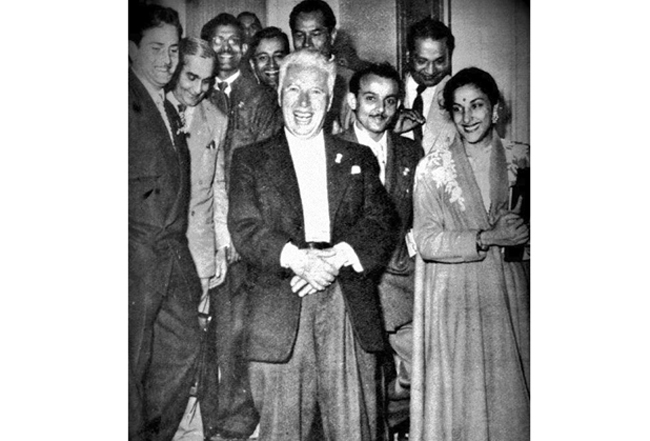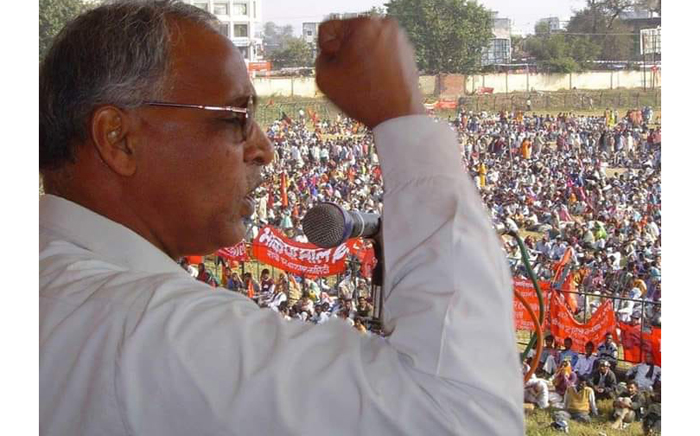Only certain people are afraid of seeing the truth of Babri Masjid demolition: Sunil Singh

Kolkata: Politician-turned filmmaker Sunil Singh, engages in a candid conversation with eNewsroom, about his film– Game of Ayodhya, censorship and the bounty on him. Following are excerpts from the talk:
eN: Tell us something about the film…
Sunil: Well, it’s a love story, set against backdrop of the Babri Masjid demolition and the riots that followed. There is nothing controversial about the film. We are just trying to narrate the true story behind the demotion and the politics involved.
eN: ABVP and VHP has made their dislike obvious, what’s your stand?
Sunil: When we began making this film, we knew that we would have to face such threats or opposition from these kinds of political organisations. I know one thing, I am telling the truth. We have researched on this issues, we are not making up things. And through this film, we want give a message – we need to unite as a nation, we cant afford to live in a society ripped apart by communalism.
eN: What do you have to say about the bounty declared?
Sunil: (Laughs) It’s a publicity gimmick. Those threatening me are using it to gain popularity in UP. I am not afraid of such threats, as I know that they are just hollow threats and shouldn’t be taken seriously.
eN: How come you managed to shoot this film, without creating controversies?
Sunil: We knew that our story line was very sensitive. So, we took all the precaution that we needed to take, to avoid controversies that Padmavati has had to face. We shot the film in Faridabad, Lucknow and even Ayodhya, and we didn’t face any opposition as we shot the film as – Game of power.
eN: Your film trailer openly shows, people placing the idols inside the masjid premise…
Sunil: Well, that’s the truth. It had happened. During Nehru’s regime, the idols had been placed inside the masjid and Rajiv Gandhi had opened the lock. These are well known facts, which I am not making up.
I am failing to understand why people are making an issue of this. I guess, its those political parties, who have used this issue to grow in stature, are being apprehensive about my film and are creating controversies and threatening me. But I have nothing to fear.
eN: What about the doldrums that the film was in, when submitted for certification?
Sunil: We knew that the censor board would have an issue with the basic plot of the film. So, we were prepared to battle it out. However, I must state that we had complete faith on Indian judiciary. Hence, when we were turned down the CBFC, we approached the National Board of Film Tribunal. We have got a U/A certification, as we chose to take no cuts. The film will be releasing across India on December 8.
eN: How much did you research?
Sunil: We took almost four years. I began scripting in 2010 and the film’s screenplay was in our hand by the year 2017. I didn’t want to compromise on facts, so it took so long. We have also consulted the Liberhan Commission Report for the film. I guess that is also one of the reason for many opposing it. BJP has completely debunked this report.
eN: If the script was ready by 2014, then what delay the film’s production?
Sunil: Well, when the script was ready, we had elections approaching. So, we kept the film in the back burner. Once the elections were over we began the film. Also, we needed some real clippings of politicians and leaders giving sermons or motivating the karsevaks, to gain access took a lot of time.
eN: Did you plan or is it a coincidence that the film is being released on the 25th anniversary of Babri Masjid demolition?
Sunil: Well, not really. We had the film ready by last year and had submitted it for certification in January 2017, the legal battle to ensure the film’s release has in away made the release date coincide with the anniversary.
eN: Many believe that you have a political agenda as you are a politician?
Politics is my profession and film my passion. These are just rumours to discredit the film’s research.






